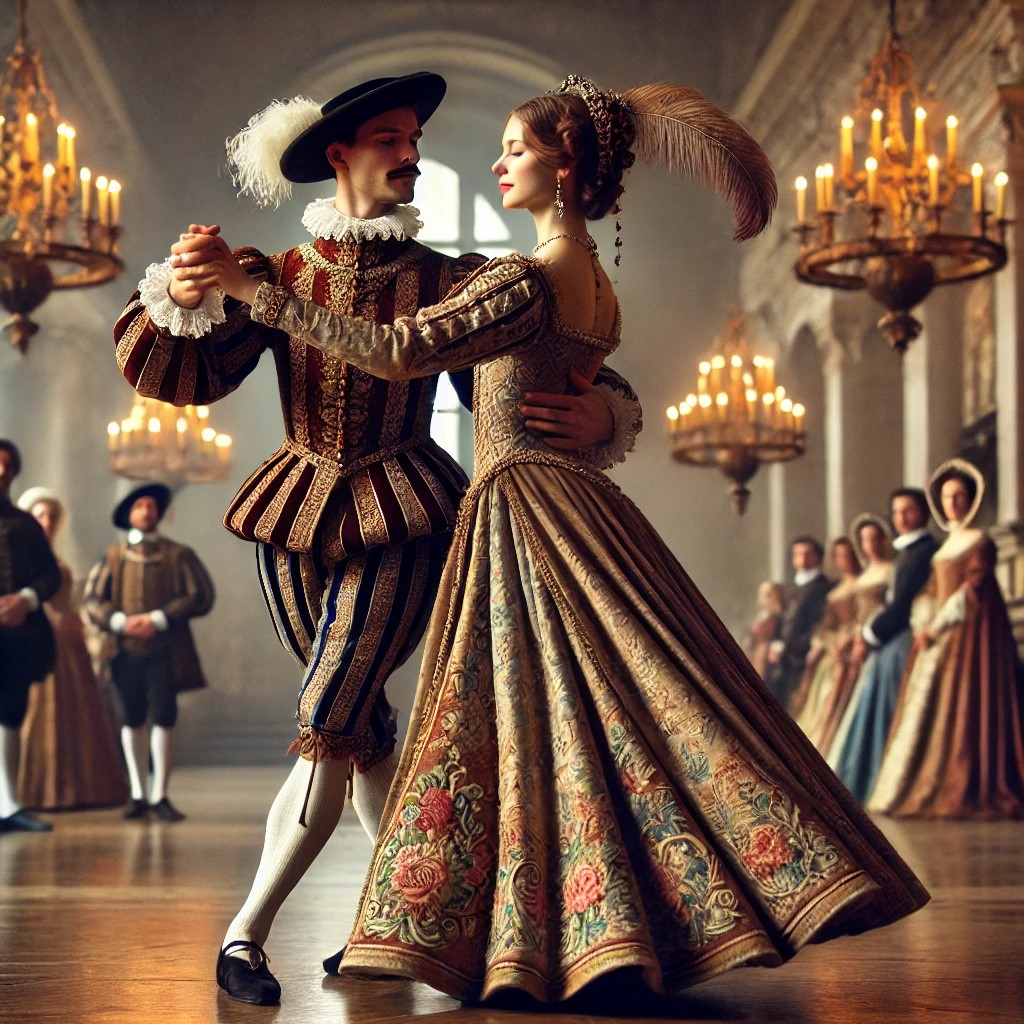Difference between revisions of "Dance (sage field)"
Tao alexis (talk | contribs) |
Tao alexis (talk | contribs) |
||
| Line 1: | Line 1: | ||
| + | [[File:Dance (sage field).jpg|right|525px|thumb]] | ||
'''Dance''' is a [[Sage Field|sage field]] available to [[Bard (class)|bards]], manifesting as a performance art form consisting of sequences of movement, either improvised or purposefully selected. More than mere physical expression, dance weaves together rhythm, motion and intent to create a language of the body, one that communicates meaning beyond words. Each movement carries both aesthetic and symbolic value, shaping the emotional and spiritual experience of those who witness it. | '''Dance''' is a [[Sage Field|sage field]] available to [[Bard (class)|bards]], manifesting as a performance art form consisting of sequences of movement, either improvised or purposefully selected. More than mere physical expression, dance weaves together rhythm, motion and intent to create a language of the body, one that communicates meaning beyond words. Each movement carries both aesthetic and symbolic value, shaping the emotional and spiritual experience of those who witness it. | ||
__TOC__ | __TOC__ | ||
Revision as of 00:41, 18 February 2025
Dance is a sage field available to bards, manifesting as a performance art form consisting of sequences of movement, either improvised or purposefully selected. More than mere physical expression, dance weaves together rhythm, motion and intent to create a language of the body, one that communicates meaning beyond words. Each movement carries both aesthetic and symbolic value, shaping the emotional and spiritual experience of those who witness it.
Contents
Beyond entertainment, dance holds power. In its simplest forms, it inspires joy, reverence, or sorrow, reflecting the mood of the dancer and the moment. But at higher levels of performance, it transcends its role as art, becoming a conduit for deeper forces. Dancers of exceptional skill can entrance an audience, guiding their emotions with precise motion, subtle flourishes and masterful control of rhythm. In the presence of wild magic, movement itself can stir the arcane, amplifying latent energies and bending the unseen forces of the world toward the dancer's intent. Whether used in ritual, battle, or celebration, dance is never just movement — it is an act of creation, influence and transformation.
Religious institutions recognize dance as a bridge between the mortal and the divine. Some deities require intricate movements to complete sacred rites, while others favor frenzied, ecstatic performances that bring about divine possession. It is not uncommon for temples to have dedicated dancer-priests who interpret omens through movement, their steps revealing hidden truths or dictating the will of the gods.
Certain cities may be renowned for their schools of dance, where bards, nobles and spies alike study under masters who pass down steps said to carry enchantments within them. These establishments might compete in grand festivals where victory grants prestige, favor, or even arcane secrets. There are also whispers of forbidden dances, patterns of movement so powerful they have been outlawed — dances that summon storms, open gates to other realms, or stir the dead from their graves.
Studies
The field includes the following sage studies:
- Accompaniment (sage study): embracing the means by which rhythm and music are fashioned to support dance; accompaniment is fundamental to the pacing, mood, and execution of dance, dictating not only the tempo but also the emotional resonance of a performance. Scholars of this study examine both the traditional and improvised forms of accompaniment across different cultures, as well as the effects of rhythm on the physicality and perception of dance.
- Danse Noble (sage study): theatrical dance performed in royal courts and temples, containing elements of folk dancing, beauty of movement, tableaux or grotesque, in highly stylised fashion. Unlike communal dances meant for celebration or participation, danse noble is structured for display, often performed before noble audiences or as part of grand ceremonies. It places emphasis on elegance, precision, and dramatic composition, where each step and gesture carries deliberate meaning. Scholars of this study explore its development from folk traditions, its codified movements, and the cultural significance of performances that depict allegory, mythology, or courtly ideals.
- Folk Dance (sage study): accentuates group participation and the use of music and rhythm to provide an emotional response from a large, involved audience. Unlike the refined and deliberate movements of courtly dance, folk dance is rooted in communal tradition, often passed down through generations without formal instruction. It serves as both celebration and storytelling, with steps reflecting historical events, seasonal rites, or shared cultural values. This study examines the regional variations of folk dance, the social and ritual functions of movement, and how dance reinforces identity and unity among its participants.
- Social Dance (sage study): the performance of dances enjoyed at social gatherings, such as the ballo, carol, stampita, or saltarello, offering a style of performance as well as an emotional connection between dancers, or between a dancer and a non-dancer. Unlike theatrical or ritualistic dances, social dance is fluid and adaptable, emphasizing grace, playfulness, or courtship, depending on the occasion. This study explores the etiquette and structure of such dances, the role of improvisation and the ways in which dance serves as a means of interaction, negotiation and personal expression within a community.
